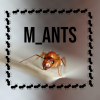I have really been wanting a Pseudomyrmex colony recently, but I have never been successful with raising the queens. I have P. gracilis, P. seminole, and P. ejectus around my house. Sometimes I see people just capturing the colonies by breaking open the twigs they nest in. I went around today and tried breaking open hollow twigs (in and around trees) all around where I see the workers, but I still haven't found a colony.
Could someone just give me more details on how, exactly, to find the colonies? I even tried following workers around to see where they went, but all they would do is randomly walk around and forage.























